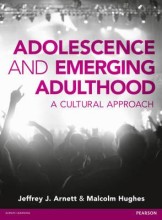Family relationships
22 important questions on Family relationships
What are five common patterns in adolescent's relationships with their siblings?
2. The amicus relationship.
3. The critical relationship.
4. The rival relationship.
5. The casual relationship.
How do relationships with siblings change in adolescence?
How is the relationship between adolescent siblings in divorced families often?
- Higher grades + faster learning
- Never study anything twice
- 100% sure, 100% understanding
How is the relationship between siblings in traditional cultures?
What problems can child carers experience?
What are a number of potential problems for only children?
How are extended family relationships in traditional cultures?
What are two dimensions parenting is described in?
2. Responsiveness
Why tends authoritative parenting to do better for adolescents?
What is the traditional parenting style?
What are two predictions of attachment theory?
2. Autonomy and relatedness should be compatible, not opposing dynamics in relations with parents. Rather than promoting prolonged dependence on parents, a secure attachment gives chldren the confidence to go out in the world, using the comfort of attachment as a secure base from which to explore.
There were mixed results for the predictions of attachment theory. In what is the claim modified?
What are two sources of conflict with parents in adolescence?
2. Cognitively: increased abilities for thinking abstractly and with more complexity make adolescents better arguers. Conflict may also reflect the different ways adolescents and their parents perceive and define the range of adolescent's autonomy.
What is part of the reason for less parent-adolescent conflict in traditional cultures?
The low level of conflict in highly industrialized traditional cultures indicate a second reason for low conflict, what is that?
What are three changes that have influenced family live over the past two centuries?
2. Longer life expectancy (death of a parent and the remarriage of their widowed parent)
3. Increased urbanization (new oppurtinies for education and employment, as well for risky behaviour)
What is the result of the historical changes if family life?
What are three changes in the past 50 years?
2. Rise in the rate of single-parent households
3. Rise in the rate of dual-earner families
What is family process?
What are three important aspects of family process that has to be considerd with regard to the effects of parental separation on children and adolescents?
2. Separation affects parenting practices. In the first year mothers tend to be less affectionate, more permissive and less consistent. Another change is that the mother may rely on the adolescent as a confidant (mixed blessing for adolescents). Less contact with fathers.
3. Economic stress.
What are four factors that help ameliorate the negative effects?
2. When separated parents are able to maintain a civil relationship and communicate without hostility.
3. Consistency of parenting between the separate households
4. Divorce mediation
What are the effects of a dual-earner familie for adolescent boys and girls?
Boys: more arguments, possible because of greater household responsibilites.
The question on the page originate from the summary of the following study material:
- A unique study and practice tool
- Never study anything twice again
- Get the grades you hope for
- 100% sure, 100% understanding































